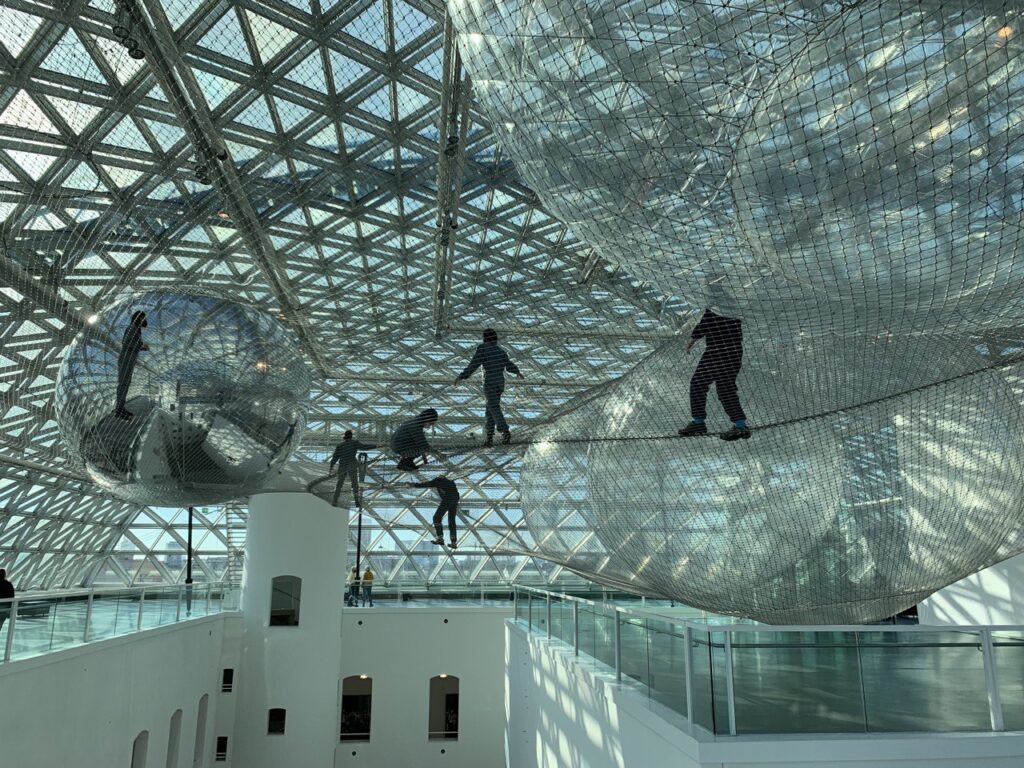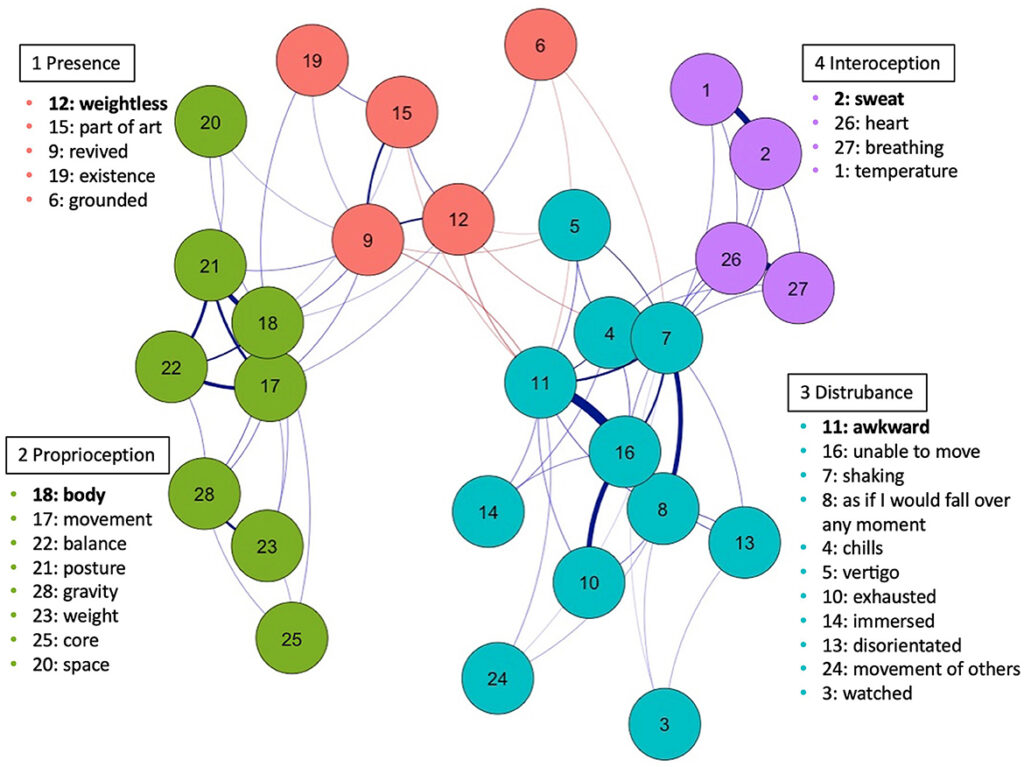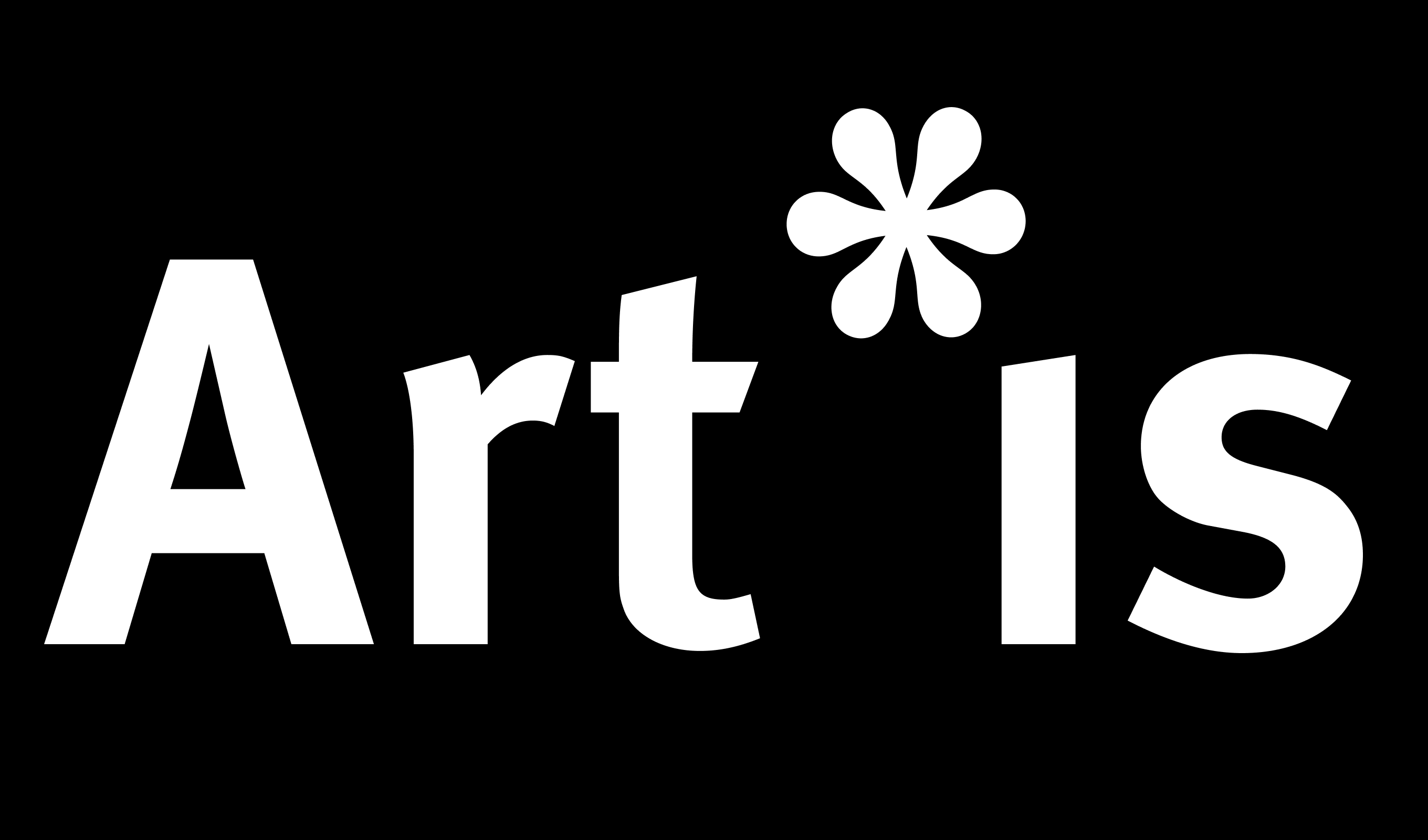written by Corinna Kühnapfel
Installation art, with its immersive and participatory nature, evokes and necessitates bodily engagement and awareness. A new study shows that these aspects are integral to the overall art experience, appreciation, and transformative outcomes.

A recent study let by Corinna Kühnapfel (UNIVIE), in collaboration with Matthew Pelowski (UNIVIE) and Joerg Fingerhut (HUB) has shed light on the importance of the body in the realm of installation art.
Unlike two-dimensional paintings, installation art not only requires the observation of visual elements but demands active bodily involvement and often envelops visitors in the artwork itself. Despite the abundance theoretical literature from art history and philosophy of art recognizing the body’s role in the reception and appreciation of installation art, there has been a lack of empirical research on this subject. The study published in Frontiers in Psychology highlights the importance of considering physical engagement and bodily experience in the components of emotional and cognitive experiences of artworks.
To address this research gap, the researchers conducted a study with the large-scale immersive and participatory installation piece, “in orbit,” by Tomás Saraceno at the K21 Kunstsammlung NRW in Düsseldorf, Germany. This installation features a walkable net spanning 2500 m² suspended above the museum’s atrium, creating an environment that heightens body awareness and elicits diverse bodily experiences.
Employing a combination of quantitative and qualitative methods, the researchers collected data by asking visitors about their subjective bodily experiences following their encounter with the installation. Based on their responses, the researchers identified four distinct groups of bodily experiences, referred to as “Communities,” representing different aspects such as proprioception (sensing the body in terms of balance and movement), interoception (sensing internal bodily aspects like heartbeat and breathing), disturbance (experiences that disrupt the engagement with art, such as chills or vertigo), and presence (enhanced awareness and participation). The researchers also explored participants’ emotional experiences, appraisals of the artwork, and whether the experience was transformative for them.

Subsequently, the researchers utilized these body “Communities” to predict the participants’ overall art experience. Experiences related to aspects such as balance, movement, and weight awareness (proprioception) were found to significantly impact art appreciation and transformative outcomes. Furthermore, “disturbing” experiences, such as feeling chills or vertigo, were associated with reporting feelings of awe, transformation, and self-reflection. These findings suggest that transformative experiences often occur when established art engagement routines are disrupted, and in situations where bodily experience is stimulated or even ruptured in terms of altering visitors’ posture, balance, or perception of body weight.
Overall, this study provides empirical evidence for the central role of the body in the reception and appreciation of installation art, emphasizing the need to consider bodily experiences alongside visual aspects in the realm of art.
In an era dominated by digital presence, installation art offers a unique in-person interaction, making it a highly valued and immersive art experience. The study suggests that heightened body awareness and experiences contribute to profound and transformative states, providing insights for artists, curators, and museums to create more engaging and immersive experiences for visitors. The research lays the foundation for embodied aesthetics of installation art, acknowledging the diverse bodily responses evoked by these artworks.
The role of the body in the experience of installation art: a case study of visitors’ bodily, emotional, and transformative experiences in Tomás Saraceno’s “in orbit”
The authors are grateful to Falk Wolf (curator of K21) and the K21 (Kunstsammlung NRW, Düsseldorf, Germany) for access to the installation, Hannah Kruft for helping with the data collection, and Prof. Markus Schrenk, Juliane Zetschke, the PropArt team (Heinrich-Heine Universität, Düsseldorf), the EVA lab, and the ARTIS lab (University of Vienna), for valuable feedback on this study.
Reference:
Kühnapfel, C., Fingerhut, J. & Pelowski, M. (2023), The Role of the Body in the Experience of Installation Art: A Case Study of Visitors’ Bodily Experience in Tomás Saraceno’s “in orbit.” Frontiers in Psychology, 14. doi: 10.3389/fpsyg.2023.1192689
